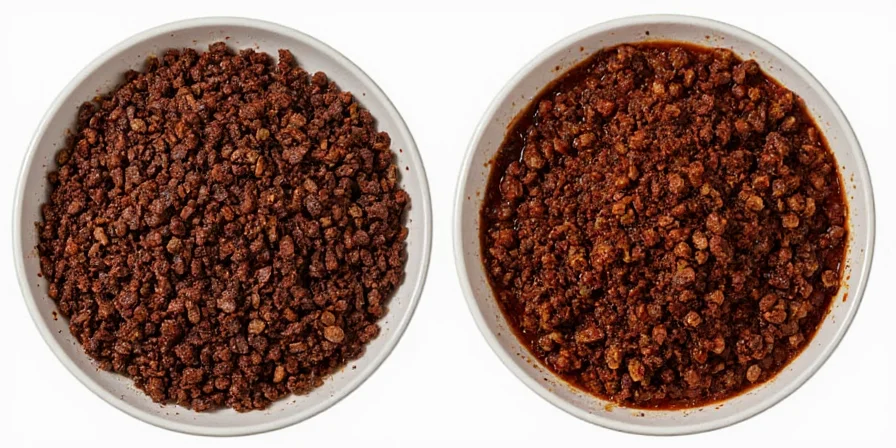Feijoada: The Spicy Soul of Brazil in a Bowl
Description
Table of Contents
- The Origins of Feijoada: From African Roots to Brazilian Staple
- Spice Breakdown: What Makes Feijoada So Flavorful?
- How to Cook Feijoada Like a Pro: Step-by-Step Tips
- Regional Variations: How Different Parts of Brazil Make It Their Own
- Modern Twists: Vegan, Instant Pot, and Air Fryer Feijoada Recipes
- Serving Suggestions: Rice, Orange, and Farofa—A Trio of Tradition
- Global Spice Traditions: How Feijoada Reflects a World of Flavors
The Origins of Feijoada: From African Roots to Brazilian Staple
Though often hailed as the national dish of Brazil, Feijoada has roots that stretch far beyond its current borders. Its foundation lies in the Portuguese feijão (bean) stews brought to Brazil during colonization. However, it was enslaved Africans who truly transformed the dish by incorporating leftover cuts of pork—like ears, feet, and tail—into the pot.
This resourcefulness birthed what we now recognize as Feijoada: a hearty, deeply spiced stew that became a symbol of unity and celebration across Brazil. Today, it's typically served at weekend gatherings and special occasions, especially in the Southeast region.

Spice Breakdown: What Makes Feijoada So Flavorful?
While not fiery hot like some chilies might suggest, Feijoada delivers a complex depth of flavor through a masterful blend of spices and aromatics:
| Spice/Ingredient | Flavor Profile | Role in Feijoada |
|---|---|---|
| Bay Leaf (Louro) | Earthy, aromatic | Adds herbal depth and balances richness |
| Black Pepper | Pungent, sharp | Enhances overall spice layers subtly |
| Cumin | Earthy, warm | Boosts umami from meats and beans |
| Fresh Garlic | Pungent, savory | Bases the flavor and ties everything together |
| Onion | Sweet, earthy | Forms the flavor base and adds body |
| Dried Bay Leaves | Mildly bitter, fragrant | Used in slow cooking for background complexity |
| Orange Peel (optional) | Citrusy, floral | Adds brightness to cut through heaviness |

How to Cook Feijoada Like a Pro: Step-by-Step Tips
Feijoada requires patience and planning, but the reward is a bowl full of history and flavor. Here's how to make it shine:
- Soak the Beans Overnight: Black beans need time to soften. Soak them for at least 8 hours.
- Brown the Meats First: Sear pork cuts before adding them to the pot to develop a caramelized crust.
- Use a Heavy Dutch Oven: For even heat distribution and better flavor development.
- Simmer Low and Slow: At least 2–3 hours, or until the beans are creamy and the meat falls apart.
- Season Gradually: Taste frequently and adjust salt and pepper as the dish develops.
- Rest Before Serving: Letting the stew sit for 10–15 minutes allows flavors to meld together beautifully.

Regional Variations: How Different Parts of Brazil Make It Their Own
Just like BBQ styles in the U.S., Brazil enjoys several regional interpretations of Feijoada:
| Region | Variation Details | Signature Ingredient |
|---|---|---|
| Southeast (Traditional Feijoada) | Full-on meat fest with multiple pork cuts | Pork ribs and sausage |
| Northeast Brazil | Omits certain offal parts; lighter version | Dried beef instead of pork |
| Southern Brazil | Uses smoked sausages and fewer beans | Chouriço gaucho (smoked sausage) |
| Amazon Region | Incorporates local fish and palm oil | Tucupi sauce |
| Rio de Janeiro | Classic, celebratory version served with rice and farofa | Collard greens |

Modern Twists: Vegan, Instant Pot, and Air Fryer Feijoada Recipes
Traditional Feijoada may be a carnivore’s dream, but modern adaptations make it accessible to everyone:
- Vegan Feijoada: Substitute pork with jackfruit, smoked tofu, or mushroom “meat.” Use vegetable broth and double up on cumin and bay leaves for depth.
- Instant Pot Version: Perfect for busy weeknights. Pressure cook soaked beans and browned meats for about 40 minutes. Natural release recommended.
- Air Fryer Topping: Crisp collard greens or cassava flour in the air fryer for a healthier crunch alternative to fried accompaniments.

Serving Suggestions: Rice, Orange, and Farofa—A Trio of Tradition
Feijoada isn’t just the stew—it’s an entire experience, usually served with these essential companions:
- White Rice: Neutral base that soaks up all the rich juices.
- Orange Wedge: Citrus cleanses the palate between bites and balances the fattiness of the pork.
- Farofa: Toasted cassava flour with butter, bacon bits, or onions—adds texture and crunch.
Some versions also include shredded collard greens (couve) sautéed in garlic and olive oil, completing the feast.

Global Spice Traditions: How Feijoada Reflects a World of Flavors
What makes Feijoada truly fascinating from a spice lover’s perspective is how it reflects global trade and migration patterns. Consider these spice connections:
- Bay Leaf: Ancient Mediterranean staple brought by the Portuguese colonizers.
- Black Pepper: Originally imported from India via maritime spice routes.
- Cumin: A Middle Eastern influence, commonly found in Iberian and North African cuisines.
- Orange Peel: An echo of Moorish culinary traditions introduced to Spain and Portugal.
- Garlic & Onion: Universally loved staples with origins tracing back to Central Asia.
Even the use of pork—a hallmark of European diets—shows the impact of colonial powers on local food culture. Feijoada is not just Brazilian; it’s a melting pot of global flavors stewed into one unforgettable dish.

Conclusion
Feijoada is more than just Brazil’s national dish—it’s a testament to history, community, and the unifying power of food. Whether you’re simmering a traditional pot for a weekend gathering or trying a vegan twist in your Instant Pot, understanding the role of spices and regional differences enhances your appreciation for this beloved stew.
Next time you dive into a bowl of Feijoada, remember that each bean and spice carries with it the echoes of cultures that shaped not only Brazil but the world of flavor itself. Bon appétit—or should we say, Bom apetite!











 浙公网安备
33010002000092号
浙公网安备
33010002000092号 浙B2-20120091-4
浙B2-20120091-4